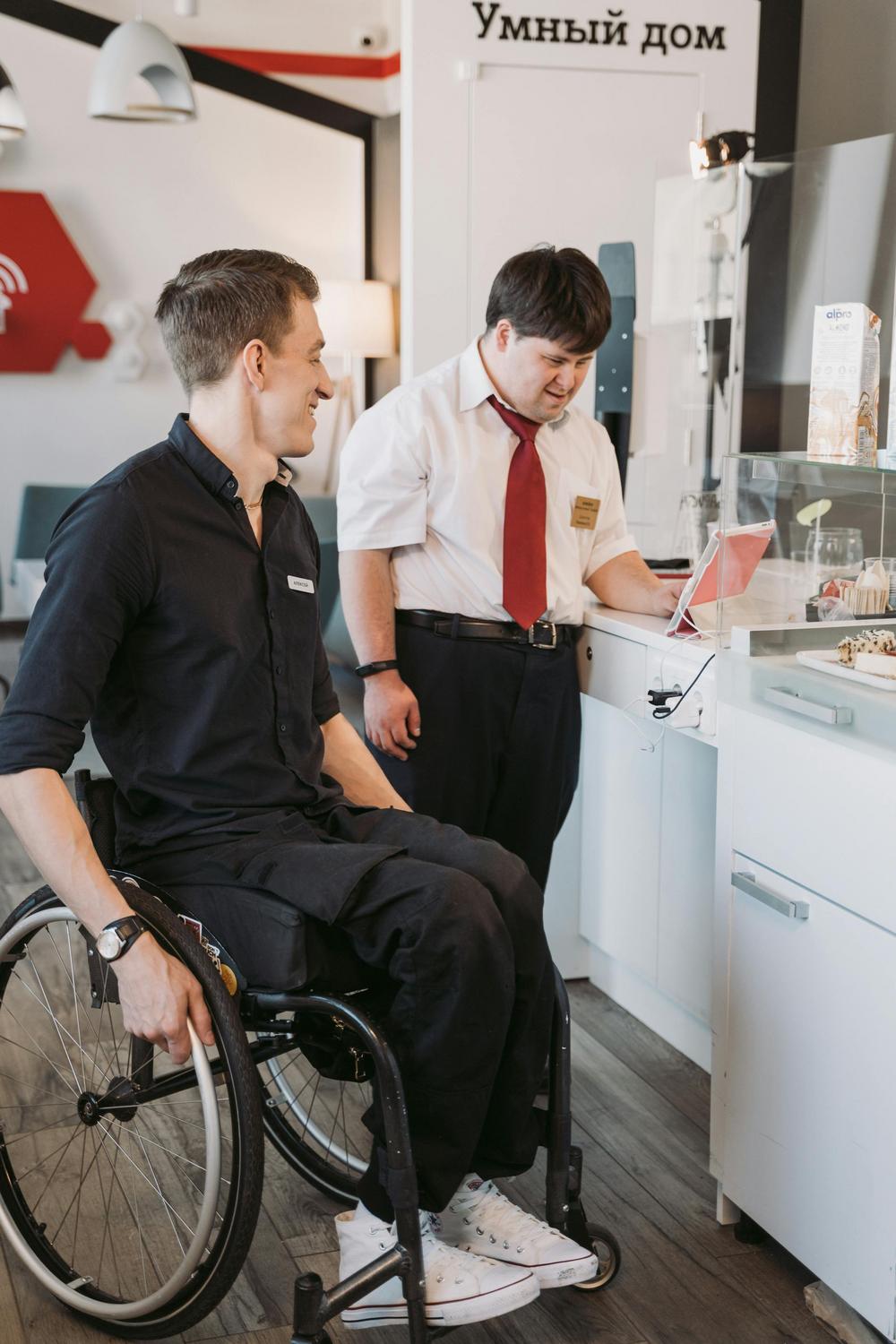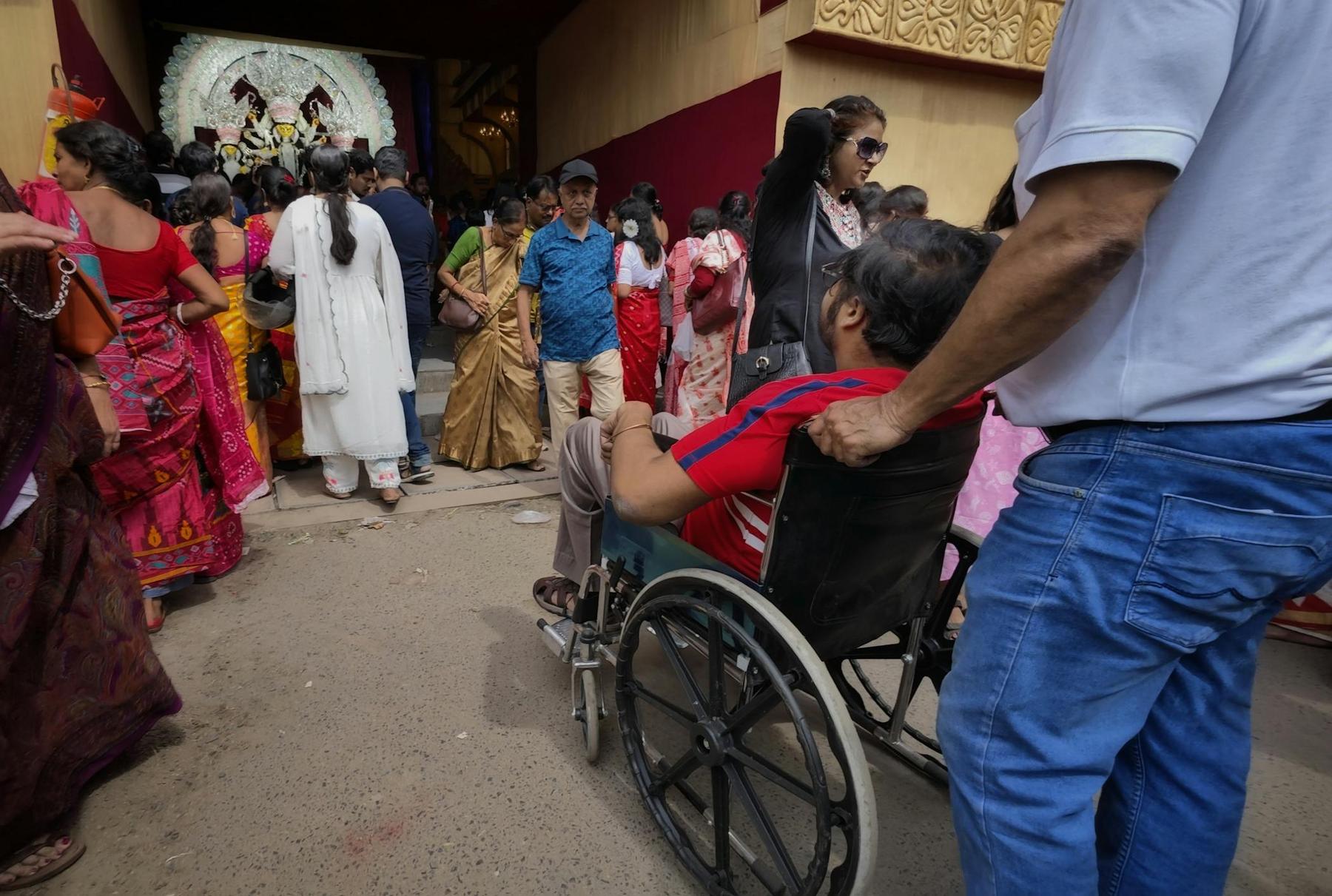Every person deserves to be heard. Every thought, need, and feeling matters—regardless of whether they’re expressed through spoken words, gestures, technology, or any other means. Yet for thousands of Australians living with communication disabilities, the simple act of expressing themselves can feel like an insurmountable challenge. This is precisely why communication support isn’t just about devices or therapy sessions—it[0m’s about honouring a fundamental human right and opening doors to genuine participation in every aspect of life.
The National Disability Insurance Scheme recognises communication as essential to independence, safety, and wellbeing. For non-verbal and speech-impaired participants across Queensland—from the tropical landscapes of Cairns to the bustling metropolitan life of Brisbane—accessing the right communication aids and NDIS support can transform daily experiences, relationships, and opportunities. Understanding what’s available, how to access it, and what truly works can make all the difference between isolation and connection.
What Communication Aids Are Available Through the NDIS?
Communication aids encompass far more than tablets with voice-output apps. They represent a diverse spectrum of tools and strategies, each designed to support different needs, abilities, and contexts. The NDIS funds these supports under the broader category of Augmentative and Alternative Communication (AAC)—methods that supplement or replace spoken language entirely.
Unaided communication requires no external devices at all. These methods harness the body’s natural communication capacity: facial expressions, eye contact, gestures, body language, and formal sign languages like Auslan. Many participants use Key Word Sign, which combines simplified signs with spoken words, bridging multiple communication styles simultaneously.
Low-tech aided communication includes non-electronic solutions that often provide remarkable effectiveness without batteries or charging cables. Picture-based systems utilise symbol boards, communication books, and Picture Exchange Communication Systems (PECS). The Pragmatic Organisation Dynamic Display (PODD) books offer multi-level communication options, with comprehensive systems costing approximately $1,500 for design, manufacture, and delivery. E-tran frames enable eye-pointing communication, whilst alphabet boards support spelling-based expression. These tools prove invaluable in environments where electronic devices aren’t practical—bathrooms, swimming pools, or during power outages.
High-tech aided communication leverages technology to provide sophisticated communication options. Speech-generating devices (SGDs) like Tobii Dynavox systems offer dynamic displays, extensive vocabulary, and synthesised voice output. Tablets running specialised AAC applications—such as Proloquo2Go, LAMP, SimPODD, TouchChat, and SNAP + Core—transform mainstream devices into powerful communication tools. These applications typically range from $150 to $400 or more.
Access methods for high-tech communication vary widely to accommodate different physical abilities: direct touch selection, head pointers, switch access with scanning, eye-gaze tracking technology, joystick control, and voice activation. This flexibility ensures that participants with diverse mobility levels can find appropriate solutions.
Crucially, research confirms that using AAC doesn’t prevent the development of spoken language. Rather, communication aids can actively support language development and speech production, offering pathways rather than barriers to verbal communication.
How Does NDIS Funding Work for Communication Devices?
Navigating NDIS funding for communication aids requires understanding two primary budget categories and three distinct cost tiers. The funding pathway depends on both the item’s cost and its classification within your NDIS plan.
Core Supports – Consumables covers low-cost items under $1,500 per item, often including paper-based systems or simple equipment. These flexible funds don’t require pre-approval for low-risk items, allowing participants to purchase and claim them directly through the myplace portal.
Capital Supports – Assistive Technology encompasses communication aids across all price ranges, with requirements scaling according to cost and complexity.
| Funding Tier | Cost Range | Requirements | Decision Timeframe |
|---|---|---|---|
| Low-Cost AT | Under $1,500 | No assessment or quote needed for low-risk items | Minimal processing |
| Mid-Cost AT | $1,500–$15,000 | Written advice from AT advisor (email, letter, or report); no formal quote required | Within 28 days |
| High-Cost AT | Over $15,000 | Formal assessment by qualified assessor; written quote required | Within 50 days |
Recent policy changes in March 2024 increased the upper limit for automatic approval of mid-cost assistive technology from $5,000 to $15,000, significantly reducing barriers and wait times for essential equipment. Mid-cost assistive technology no longer requires formal quotes—written advice from an AT advisor suffices, provided they indicate approximate costs.
It’s worth noting that iPads configured as communication devices face special considerations. As of October 2024, iPads aren’t standard NDIS supports but may be considered “replacement supports” if they serve as the primary communication device for participants with complex communication needs. This requires completing an Application for Replacement Support form using existing plan funding, with strong supporting documentation from speech pathologists justifying why an iPad with an AAC app represents the best solution.
Beyond purchasing devices, NDIS funding covers speech pathology assessments and therapy, AAC system training, implementation support, troubleshooting assistance, parent and carer training, and maintenance and repairs of funded communication equipment. This holistic approach ensures devices don’t simply sit unused but become genuinely integrated into daily life.
Who Can Access NDIS Support for Communication Disabilities?
Eligibility for NDIS communication support centres on demonstrating that communication difficulties are permanent, significant, and substantially reduce functional capacity across life domains. Applicants must be under 65 years when applying, hold Australian citizenship, permanent residency, or a Protected Special Category Visa, and likely require ongoing NDIS support throughout life.
Communication disabilities intersect with numerous conditions commonly supported by the NDIS. These include Autism Spectrum Disorder, Cerebral Palsy, Down Syndrome, Acquired Brain Injury, Motor Neurone Disease, stroke with permanent impairment, Parkinson’s Disease, Multiple Sclerosis, intellectual disability, hearing impairment, Fragile X Syndrome, developmental verbal dyspraxia, and traumatic brain injury. According to NDIS participation data, approximately 4.8% of participants have hearing impairment as their primary disability, with approximately 0.6% having other sensory or speech impairments as their primary disability.
Children under seven years benefit from the NDIS Early Childhood Approach, which enables access to early intervention supports for developmental delays without requiring formal diagnosis. This proactive support sets foundations for better long-term communication outcomes.
However, a critical challenge persists: many NDIS staff and the broader community don’t fully understand communication disability or its functional impacts. This creates barriers during the application process. Successful applicants clearly explain how their communication disability affects their entire life—not just speech production, but their ability to express needs and preferences, participate in employment and education, maintain relationships, and engage with their community.
For participants in Cairns, Brisbane, and throughout Queensland, Local Area Coordinators (LACs) provide initial guidance and assistance with identifying local disability supports and mainstream services. They serve as vital first contacts for navigating the NDIS system and understanding available communication supports in regional areas.
What Role Do Speech Pathologists Play in Supporting Non-Verbal Participants?
Speech pathologists are university-trained allied health professionals who serve as cornerstone providers for communication support under the NDIS. Their expertise extends far beyond helping people pronounce words—they assess, diagnose, recommend, implement, and support comprehensive communication solutions.
Speech pathology services funded by the NDIS encompass comprehensive communication assessments evaluating both expressive and receptive language abilities. They conduct speech sound disorder assessments, pragmatic and social communication evaluations, and literacy assessments. Beyond diagnosis, they provide targeted therapy to improve speech production, language development activities, social communication coaching, and crucially, complete AAC services.
In the realm of communication aids, speech pathologists assess AAC needs, recommend appropriate systems, facilitate device trials, train users and families on AAC implementation, troubleshoot technical challenges, and optimise setups to align with therapy goals. They bridge the gap between having a communication device and actually using it effectively.
The NDIS allied health rate for speech pathology sits at $193.99 per hour. If a participant receives Capacity Building funding of $7,759.60 in a twelve-month plan, this translates to approximately 40 hours of support—sufficient for fortnightly speech pathology sessions throughout the year with hours remaining for other allied health professionals.
Importantly, speech pathologists embrace family-centred approaches, providing parent and carer training on implementing communication strategies at home. They educate families about communication disability impacts and support them in understanding their loved one’s communication preferences. This collaborative model ensures strategies extend beyond therapy sessions into everyday environments.
Many providers across Queensland—including those serving Cairns and Brisbane—now offer multidisciplinary support through key worker models, where one professional coordinates multiple services. They provide in-home, school, workplace, and community-based service delivery, with telehealth options increasingly available for regional and remote areas, ensuring geographical barriers don’t prevent access to essential communication support.
How Can You Access Communication Support in Queensland?
Queensland participants seeking communication aids and NDIS support navigate the same national system with localised implementation. Whether you’re in tropical Cairns or metropolitan Brisbane, the fundamental processes remain consistent, though service availability may vary.
Your NDIS plan management type significantly influences provider choice and flexibility. Self-managed plans offer maximum flexibility—participants manage their own funds and can engage any qualified speech pathologist or provider, regardless of NDIS registration status. Plan-managed plans utilise a plan manager to handle invoicing and payments whilst maintaining flexibility in provider choice, accessing both registered and non-registered providers. Agency-managed plans have the NDIA managing all payments, limiting participants to NDIS registered providers only.
Mobile speech pathology services bring expertise directly to homes, schools, and workplaces throughout Queensland. This proves particularly valuable for participants with mobility challenges, complex medical needs, or those in regional areas where clinic-based services might require extensive travel.
Telehealth options have expanded dramatically, offering viable alternatives for remote consultations, device programming support, troubleshooting assistance, and even some aspects of therapy delivery. Whilst hands-on assessment and device trials typically require in-person appointments, telehealth bridges gaps between face-to-face sessions and provides crucial support when immediate physical presence isn’t feasible.
The NDIS participant service guarantee establishes clear timeframes for decisions: 28 days for low and mid-cost assistive technology requests, and 50 days for high-cost assistive technology. When these timeframes aren’t met, participants have grounds for escalation and can seek support from the National Disability Advocacy Programme if needed.
For early childhood participants, the Early Childhood Approach partners work with families of children under nine years, providing developmental supports and connecting them with local services before formal NDIS plans begin. This proactive engagement often proves crucial for children with emerging communication difficulties.
Why Is Multi-Modal Communication Essential for Success?
One of the most transformative insights in modern communication support is this: one AAC system rarely meets all communication needs across all situations and contexts. Research demonstrates that combining different communication methods—what professionals call multi-modal communication—significantly improves communication success and user satisfaction.
Consider the reality articulated by an experienced AAC user: “Having access to different modalities is so important because some days I can’t move very much at all. So I would use my iPad on those days because it’s bigger and easier to navigate. But then I use my phone with the text-to-speech application, and then I will also use my natural voice to yell at my son without any one of those options. If I have to stick to one, it would not give me the flexibility or the agility I need for certain days.”
This flexibility proves essential because communication demands shift constantly. A high-tech SGD might be perfect for detailed conversations at home but impractical during swimming lessons. Picture boards might work beautifully in predictable classroom routines but lack the vocabulary needed for spontaneous playground interactions. Formal sign language might be ideal with family members who understand it but ineffective with unfamiliar community members.
Multi-modal approaches also provide vital backups when technology fails. Batteries die, devices malfunction, software crashes, and electricity becomes unavailable. Low-tech communication aids ensure that communication never completely stops, even when high-tech solutions temporarily fail.
Supporting AAC users effectively requires communication partners to embrace several key principles. Address the person directly—speak to the AAC user, not their support person or family member. Allow processing time without rushing or finishing sentences; using AAC takes significantly longer than speaking. Become familiar with the individual’s specific vocabulary and access methods. Recognise that AAC enables far more than basic requests—it supports jokes, feelings expression, opinions, storytelling, and relationship deepening.
Pay attention to non-verbal signals beyond the AAC device itself. Hand gestures, eye contact, movements, tone of vocalisations, and facial expressions all convey meaning and preferences. These natural communication methods often work in concert with formal AAC systems, creating richer, more nuanced exchanges.
Take AAC everywhere unless safety genuinely prohibits it. Communication devices aren’t therapy tools to be used only in sessions—they’re essential personal belongings that support participation across all life contexts.
Moving Forward: Communication as Empowerment
Access to communication support through the NDIS represents far more than funding for devices or therapy sessions. It embodies Australia’s commitment to recognising communication as a fundamental human right, as outlined in the United Nations Convention on the Rights of Persons with Disabilities and reinforced through Australia’s Disability Strategy 2021-2031.
For participants throughout Queensland, from Cairns to Brisbane and everywhere between, navigating this system successfully requires understanding eligibility criteria, funding pathways, assessment requirements, and the vital role of qualified speech pathologists. It demands persistence through application processes, patience during device trials, and commitment to training and implementation.
The documented benefits of appropriate communication aids extend across every life domain: enhanced expression of needs, thoughts, and emotions; improved social interactions and relationships; increased independence and reduced reliance on caregivers; better mental health outcomes; greater educational and employment opportunities; enhanced community participation; reduced frustration from communication barriers; and improved confidence and self-esteem.
Early intervention yields particularly powerful results. Children with early speech pathology intervention and AAC access show improved language development and avoid secondary difficulties that compound initial communication challenges. Consistent access to communication methods from early childhood supports ongoing skill development and creates foundations for lifelong communication success.
Contemporary developments continue improving accessibility. The March 2024 increase in automatic approval thresholds for mid-cost assistive technology from $5,000 to $15,000 reduces barriers significantly. Technology itself advances rapidly—more natural synthesised speech, improved eye-gaze systems, better integration with mainstream devices, faster processing, more comprehensive vocabulary, and enhanced portability all emerge regularly.
Yet technology alone never suffices. The human elements matter profoundly: skilled clinicians who understand individual needs, families who embrace multi-modal approaches, support workers who honour communication preferences, and communities that create space for diverse communication methods. These relationships transform devices from expensive objects into genuine pathways for connection.
Communication belongs to everyone. When non-verbal and speech-impaired participants receive appropriate support through the NDIS, they don’t just gain access to devices—they claim their rightful place as full participants in Australian society, contributors to their communities, and individuals whose voices genuinely matter.
What’s the difference between low-tech and high-tech communication aids for NDIS participants?
Low-tech communication aids are non-electronic tools like picture boards, communication books, PECS cards, and alphabet boards that don’t require batteries or electricity. High-tech aids include speech-generating devices, tablets with AAC apps, and eye-gaze systems that provide synthesised voice output and dynamic vocabulary options. Both categories receive NDIS funding, with low-tech aids typically costing under $1,500 and falling under consumables or low-cost assistive technology, whilst high-tech options may reach mid-cost ($1,500–$15,000) or high-cost (over $15,000) categories. Many participants successfully combine both types for different situations and contexts.
Can NDIS participants in Cairns and Brisbane access the same communication support as metropolitan areas?
Yes, NDIS participants in Cairns, Brisbane, and throughout Queensland access the same national funding framework and eligibility criteria. However, service delivery methods may vary—regional areas like Cairns increasingly utilise mobile speech pathology services and telehealth options to overcome geographical barriers. Many providers now serve multiple Queensland locations, offering in-home services, community-based support, and remote consultations. Self-managed and plan-managed participants have greater provider flexibility, including accessing telehealth specialists from other regions when local options are limited.
How long does it take to receive NDIS funding approval for communication devices?
NDIS decision timeframes depend on the assistive technology cost tier. Low-cost items (under $1,500) require minimal processing and often don’t need pre-approval. Mid-cost assistive technology ($1,500–$15,000) should receive decisions within 28 days of application, requiring only written advice from an AT advisor without formal quotes. High-cost assistive technology (over $15,000) requires formal assessment and quotes, with decisions targeted within 50 days. Recent policy changes have streamlined mid-cost approvals significantly, reducing wait times for many essential communication devices.
Will using AAC devices prevent my child from developing spoken language?
No—research consistently demonstrates that using AAC doesn’t prevent spoken language development. In fact, communication aids can actively support language acquisition and speech production by reducing frustration, providing language models, and creating opportunities for communication practice. Many children who begin using AAC eventually develop some spoken language capabilities whilst continuing to use their devices for complex communication. AAC provides communication access immediately rather than waiting for speech that may develop slowly or not at all, preventing secondary difficulties from prolonged communication barriers.
What happens if my communication needs change after receiving NDIS-funded devices?
NDIS plans undergo regular reviews, typically annually, though participants can request earlier reviews if circumstances change significantly. If your communication needs evolve—whether due to skill development, condition progression, or changing life circumstances—work with your speech pathologist to document these changes and request plan adjustments. NDIS funding can cover device upgrades, new assessments, additional training, and different communication tools as needs shift. The scheme recognises that communication requirements aren’t static, and plans should adapt accordingly to support ongoing functional capacity.



